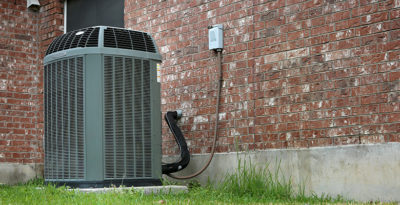Many people are looking for ways to cut back on their energy bills, and one popular solution is to install a heat pump. How does a heat pump cool your home in the summer? Mission Mechanical explains how a heat pump works and how it can help you stay cool during the hottest months of the year.
How Heat Pumps Work
Heat pumps work by transferring heat from one source to another. There are different types of heat pumps, but all of them transfer heat in some way.
- Air source heat pumps transfer heat between indoor air and outdoor air. This is the type of heat pump most people are familiar with. They are used to cool homes in the summer and to heat them in the winter.
- Geothermal heat pumps transfer heat between the indoor air and the earth. This type of heat pump is becoming more popular, as it is a more efficient way to use renewable energy. Geothermal heat pumps can also be used to cool homes in the summer and to heat them in the winter.
How Do Heat Pump Systems Cool Differently from Air Conditioners?
When it comes to cooling, heat pumps use the same process as air conditioners. Both types of machines use refrigerant and coils to extract heat from the air in your home. The refrigerant is then pumped outside, where heat from the refrigerant is expelled into the atmosphere.
The main difference between heat pumps and air conditioners has to do with heating. While air conditioners can only provide cooling, heat pumps can also be used as heating systems. This is because heat pumps can reverse operation, unlike air conditioners. Air conditioners can pull heat from the indoor air and send it outside, while a heat pump can pull heat from an exterior source, such as the outdoor air, the earth, or a water source.
How Does a Heat Pump Cool a Home?
Heat pumps cool homes and businesses by transferring thermal energy from one area to another. The various components of a heat pump system include the compressor, condenser coil, evaporator coil, and expansion valve.
Air cycles through the indoor air handler and over the evaporator coils. The refrigerant within the coils absorbs heat from the air. The refrigerant then circulates outdoors to the compressor, which raises the pressure and temperature. The condenser coils release heat into the outdoor atmosphere. Refrigerant flows through the expansion valve and back indoors to the air handler to repeat the cooling process.
How to Choose the Right Heat Pump for Your Home
When it comes to heat pumps, size definitely matters. If your heat pump is too small, it won’t be able to cool your home effectively; if it’s too big, it will cycle on and off frequently, leading to increased energy costs and more frequent breakdowns.
It’s important to choose the right heat pump for your needs. You’ll want to find a model that has the best energy-efficiency levels possible, as this will ensure that you’re not spending too much on cooling costs.
It’s also important to find a heat pump that fits within your budget. By doing a little bit of research upfront, you can find a model that meets your efficiency and cooling needs, and doesn’t break the bank.
Enjoy Efficient Cooling in Your Home
A heat pump is a great way to cool your home in the summer. By using a heat pump, you can save money on your cooling bills and keep your home comfortable. If you still have some questions about how a heat pump cools or you want to know more about installing one in your Central Indiana home or business, contact Mission Mechanical today! We can help you find the right heating and cooling system for your home.




